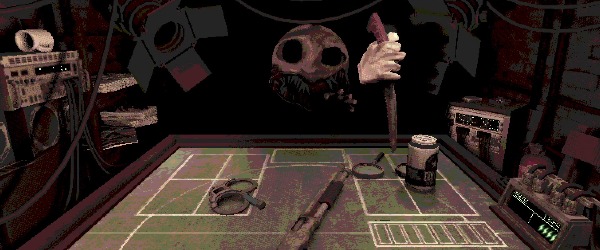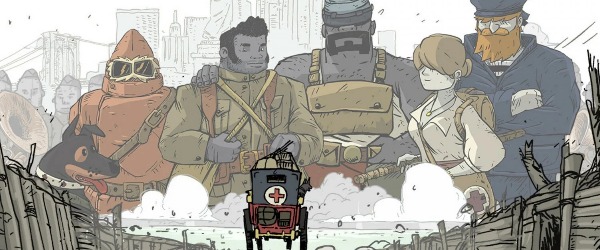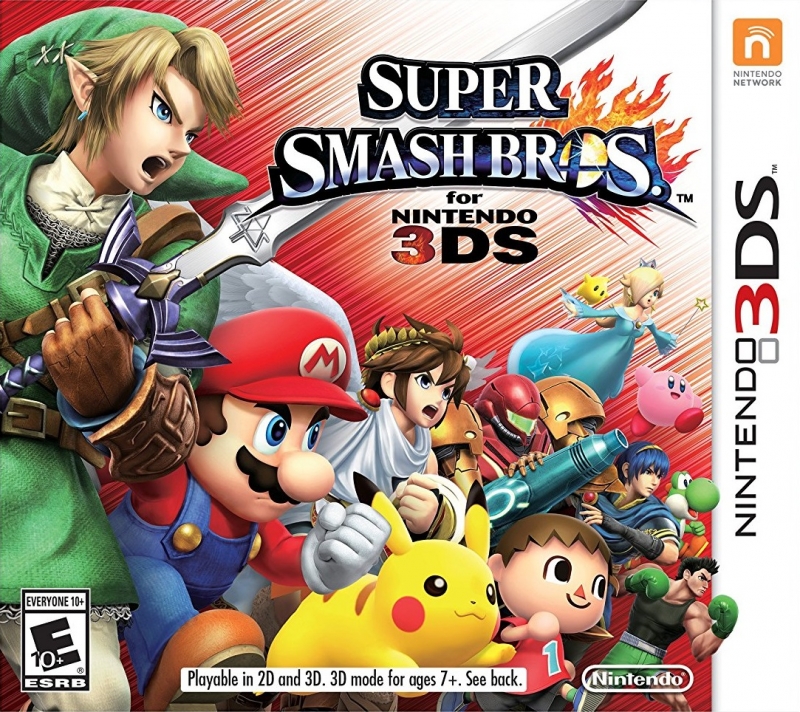
Super Smash Bros. for Nintendo 3DS - Review
by VGChartz Staff , posted on 11 October 2014 / 7,455 ViewsNintendo’s popular Super Smash Bros. series has usually been a once in a console generation event, eagerly anticipated then endlessly replayed until the next iteration launches. Super Smash Bros. for Nintendo 3DS is unique in that it is the first iteration of the famed fighter to be released on a handheld, and because it is just the first dosage of a 1-2 Smash Bros. punch with a Wii U version releasing imminently. Rather than release the exact same game for both platforms, Nintendo and developer Namco Bandai Games have opted to craft unique experiences, this one celebrating Nintendo’s rich handheld legacy. For the most part the transition works beautifully but there are a few technical and design drawbacks that prevent the 3DS version from achieving its full potential.
The roster is the largest in series history. You have access to 36 characters off the bat with a further 12 to unlock. Most of the cast from Brawl survived the transition, with some notable omissions such as Snake and the Ice Climbers (Pokemon Trainer has also been pared down to just Charizard). The new additions more than compensate for who has been axed. Now you can play as Shulk from Xenoblade, the secretly devastating Villager from Animal Crossing, and the speedy, overpowered Little Mac from Punch Out, among others. The two high profile third party additions - Namco Bandai’s Pac-Man and Capcom’s Mega-Man - do not disappoint either. For all the exciting new characters, the most meaningful addition is you, or rather your Mii.
You can create and customize Mii fighters with a variety of fighting styles, moves, and equipment. Besides the physical limitations of how your Mii can look, the options are satisfactorily deep. The ability to swap out one attack for another extends to the game’s full roster. As you play you will consistently unlock new moves. This makes it that much more difficult to predict what your multiplayer opponents will be capable of and gives experts the tools to craft the ultimate version of their preferred fighter.
The controls take some getting used to. Within my first few fights the rubber of my (relatively underused) circle pad slid off due to the sheer intensity and frequency of my movements. It was only the first of many instances. You have the options to customize the controls to your liking by swapping the button commands for attacks, specials, jumps, grabs and blocks. However, you cannot use the D-pad to move, it being used for taunts instead. As someone who spent a lot of time playing Brawl with the horizontal Wiimote configuration (my favorite after the GameCube controller), I sincerely wish there was the option to map movement to the D-pad instead.
In regards to single player mode, the lackluster and clunky Subspace Emissary mode from Brawl is thankfully absent. Unfortunately it is replaced by the even blander 3DS exclusive Smash Run mode. In Smash Run you guide your selected character through a side-scrolling labyrinth of 2D platforms populated by enemies from various different Nintendo games. Your purpose is to defeat enemies in order to collect as many power-ups as you can within a five minute time limit that will boost your stats such as attack power, speed, defense, jump ability, etc. in preparation for an ultimate Smash-style showdown with your foes who have also been collecting as many items and stat boosts as they can. The level design here seems random, and not in a good way. The enemies are not much fun to fight either. This mode has a lot of shortcomings to be sure, including that a five minute prep time for a one minute battle is extremely anti-climactic in the first place.
Classic mode has you take a character through six arcade-style bouts. The big change this time around is the new boardgame aesthetic that allows you to pick your next battle, thanks to being given hints on who you will be fighting based on the logo on the path. Your other incentives are the gold coins or trophies that may be strewn along the path to your next battle. Tougher fights will results in greater prizes if you win or greater losses if you are defeated. The difficulty of classic mode is scalable on a 91-point scale, from easiest to night impossible. As you progress through the difficulties you will encounter more surprises including devastating, and downright terrifying, changes to the final fight with Master Hand. I spent a lot of time with the comfort and familiarity of classic mode. Although it is short and formulaic it is still the most satisfying single player mode the game has to offer.
There is also an All-Star mode, which tasks you with surviving multi-man battles against the game’s entire roster, separated by the time period of their debut appearances. You start off fighting Mario, Mega Man and other icons from the 80s and finish by squaring off with fresh faces such as Rosalina and Greninja. Though the mode is a bit on the frivolous side it is fun for what it offers. Not only is it a pleasant homage to Nintendo’s past but it also reminds you how many great new characters have arisen from the DS/Wii generation onwards.
Multiplayer has always been at the core of the Smash Bros. experience and of course the move to a portable system brings with it challenges. Lag in local multiplayer (usually when playing with more than two combatants) is an unforgivable offense that dilutes the series' trademark for quality. Rest assured it is functional and playable more often than not, but those few instances where your fights are disrupted by latency leave a stinging impression. Latency issues in online multiplayer depend on your connection - some lag is to be expected but in this regard Super Smash Bros. for Nintendo 3DS actually held up better than I expected. The online offerings are more fleshed out overall than Brawl’s barebones offerings, but with no way to communicate online the digital area feels quite barren and hard to distinguish from battling AI.
You can fight For Fun or For Glory online. While waiting in a lobby for a match to start you can warm-up by practicing against AI controlled foes. Once all the combatants are present and ready to go it's a fairly smooth experience, though assembling the necessary number may take a while depending on your internet connection. One neat touch is that you can spectate and even bet gold on the outcome of other people’s fights around the world.
The stages you battle on range from old favorites going all the way back to the N64 original to new battlefields drawn specifically from handheld titles. My favorite new stage is the new version of Kirby's Dream Land, which imitates the look of a GameBoy title down to the monochrome graphics and 160/144 screen borders. All levels are available in a flat, unobtrusive variant, and you'll fight exclusively on these stages in the For Glory online mode.
The graphics are bright, vibrant and colorful. The framerate holds steady at a buttery-smooth 60 FPS (during single player), capturing the fast, frenetic, fighting spirit of past entries. The 3D presentation is barely noticeable, and can in fact be a strain on the eyes when your focus is constantly shifting all over the screen, although as a 2.5D fighter the single plane presentation was never going to offer much in the way of depth anyway. It can be cool when a character smashes face first into the screen in 3D, but overall you're better off saving your battery power.
All of the action is condensed to the dimensions of the 3DS’s smaller screen and characters have been given bold outlines to make them easier to distinguish. The red and blue outlines used for team battles are especially useful for keeping track of who is friend or foe, as whilst small 1-on-1 fights are easy to follow the larger 4 player brawls often result in the camera pulling out too far to discern precisely what is going on in the fight. This has a notable impact on your performance in such multiplayer battles.
The game’s menus are a garbled mess. I found no logic or order in the way the game’s modes and options were laid out, or why certain icons are larger and more prominent than others. It will take you a while to figure out exactly where everything is. The loading times are also wildly inconsistent. The initial loading screen lasts several seconds and varies in length depending on the game mode. Coupled with the 3DS’s painfully sluggish OS and it all makes for an achingly slow sequence of events when starting up the game for the first time.
You cannot help but be pleased with the audio that emanates from the 3DS speaker though. The game’s score is a terrific orchestral mix of Nintendo fanfare. The voice-acting, though limited to grunts, screams, a choice catchphrases really helps bring the wide array of characters to life. The absurdity of Wii Fit Trainer doling out fitness advice while she simultaneously delivers a beatdown, or the rush you feel when the disembodied audience suddenly start chanting your character’s name are just some of the highlights that makes this one of the best audio experiences available on the 3DS.
Other extras include stadium mini-games, Multi-Man Smash mode, and a mode in which you battle Beyblade-style spinning tops with player information obtained through Street Pass. Through these various modes there are so many unique challenges to complete and things to unlock including characters, stages, moves, music, trophies and more that you'll definitely feel you've gotten your money's worth from Super Smash Bros. 3DS.
In some respects the final judgment on Super Smash Bros. for Nintendo 3DS cannot be passed until the missing elements are filled in. Namely, the launch of Amiibos, its interactivity with Super Smash Bros. for Wii U, and what Nintendo may have in store in terms of DLC. That is all in the future, however; as things stand Super Smash Bros. for Nintendo 3DS is pretty damn great.
VGChartz Verdict
8.6
Great
This review is based on a digital copy of Super Smash Bros. for Nintendo 3DS for the 3DS


























